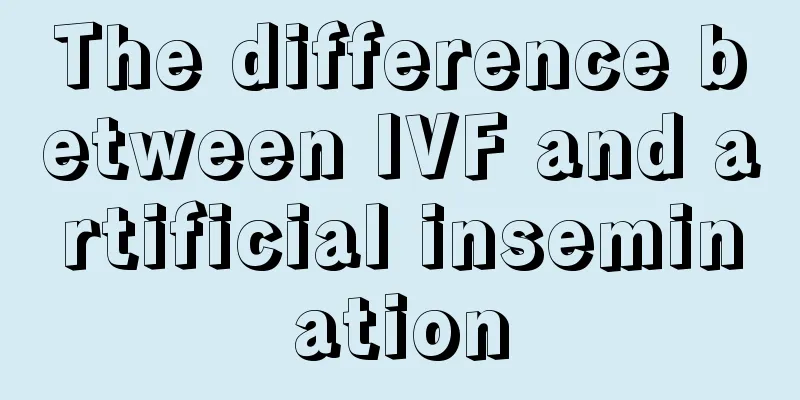The difference between IVF and artificial insemination

|
In our daily life, there are always some couples who want a baby very much, but they still don’t have a baby after many years of marriage. In this case, many couples will do some examinations in the hospital. Based on the results of these examinations, the doctor will recommend in vitro fertilization or artificial insemination. Although both in vitro fertilization and artificial insemination can fulfill everyone's wish of having a baby, there are many differences between the two methods.
Artificial insemination is mainly used for infertility caused by male factors such as severe hypospadias, retrograde ejaculation, erectile dysfunction, azoospermia, oligospermia, asthenospermia, and semen liquefaction disorder. Artificial insemination can also be used for some female-related infertility, such as vaginismus, small cervix, abnormal cervical mucus, poor post-coital test, etc. In addition, there are some special cases, such as infertile couples due to immunological reasons, both of whom are heterozygous for the same autosomal recessive genetic disease or the male suffers from an autosomal dominant genetic disease, in which case artificial insemination can be used to achieve pregnancy and avoid the birth of unhealthy offspring. In vitro fertilization is suitable for patients with infertility caused by fallopian tube infertility, unexplained infertility, endometriosis, male factor infertility, abnormal ovulation, cervical factors, etc., as well as couples who are still unable to become pregnant after other conventional treatments. In vitro fertilization means that the combination of sperm and egg is carried out in a test tube, and the fertilized egg is allowed to grow, divide and develop in a qualified environment for 4-6 days to form an embryo. The embryo is then transplanted into the uterine cavity, where it can be implanted, developed, and finally born. This is a method of reproduction that requires very high scientific and technological requirements.
Artificial insemination is a technology that uses artificial injection to deliver the husband's or a sperm donor's sperm into the female reproductive tract to achieve conception. It is a remedy for couples whose infertility is caused by male factors to have children. There are two main types of artificial insemination: one is insemination with the husband's semen. The other is artificial insemination with sperm from a sperm donor or frozen bank. For infertility due to male factors, female cervix, immune or unexplained reasons, the semen can be washed before artificial insemination in the uterine cavity or intraperitoneal cavity, or direct insemination in the follicle. |
<<: Pregnant woman with recurrent low-grade fever at 14 weeks
>>: My chest is swollen and I can only breathe through my mouth
Recommend
What causes itchy genital skin?
Gynecological diseases have always been a trouble...
Will breastfeeding cause sagging breasts?
Breast hyperplasia is a very common disease. This...
How to treat Candida albicans vaginitis?
Gynecological diseases have become a major killer...
How much does the 9-valent cervical vaccine cost?
Cervical cancer is a relatively common gynecologi...
Signs that a woman is more likely to give birth to a daughter
What are the characteristics that make it very ea...
Pre-menopausal symptoms
Symptoms before and after menopause are the names...
Is menstrual breast pain normal?
Many women will experience breast pain a few days...
How do women use dumbbells to train their chest muscles?
Dumbbells are a very commonly used fitness equipm...
How to catch crucian carp if it doesn't bite? What to do when fishing?
Crucian carp has a small mouth so it eats lightly...
How to connect a computer to a printer? What formats does the printer support?
Generally, after turning on the computer, click t...
7 things women are most afraid of
There are some things that people are very taboo ...
I love you in my heart but I can't say it out loud --- aphasia
"Speaking" is a simple and easy thing f...
Popular Science丨Adding beauty to the neck and supporting health
The cervical spine is an important anatomical str...
Popular Science Debunks Rumors | Osteoporosis is an old age disease, does it only occur when you are old?
Rumors debunked: Osteoporosis is not exclusive to...
Hard belly and frequent urination in late pregnancy
During pregnancy, the uterus continues to grow an...









